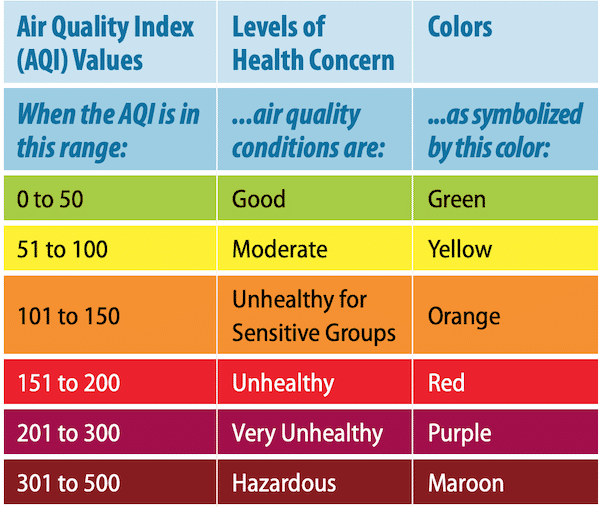Your trusted home service experts
IAQ In Schools, Daycares and Senior Centers

If you currently send your child to school or and/or loved ones live in a senior care center, it’s time to get familiar with the essentials of Indoor Air Quality (IAQ). Even when the air we breathe looks completely clear, there may be more to the story that includes an increase in allergies and in some cases, exposure to toxic particles that could jeopardize health in more significant ways. Learn the basic science of IAQ, understand sometimes complicated air quality standards and discover solutions we can all take to keep our loved ones, and ourselves, protected.
School Closures Linked to Indoor Air Pollution
When left unchecked, school closures as a result of poor indoor air quality can become a reality. In March of 2019, two elementary schools in Indiana closed for monitoring and IAQ testing after a rise in childhood cancer cases raised suspicions.1
In Harper Woods, Michigan, parents raised a concern about the safety of schools leading to school closures and the reconfiguration and moving of entire school grades.2 As fires rage through California each season, school boards are left to scramble as dirty air starts to take over the region.
Steve Henshaw, CEO of EnviroForensics
We can do something about the contamination and we can clean up the contamination that is identified and known.
What Is Indoor Air Quality And Why Should I Care?
Indoor Air Quality refers to the air that exists within the buildings and structures we occupy, and assesses whether or not that air can be safely breathed by humans and animals.
Air is all around us. We don’t need to be awake to breathe it in, so chances are few of us even think about it. Depending on where you live, weather conditions, forest fire activity and other variables, harmful elements that can make breathing dangerous may exist in air that you can’t see, touch, or smell.
Outside, awareness has spread to multiple generations now about our fragile Ozone Layer – the thin part of the earth’s atmosphere that absorbs the harmful rays of the sun, shielding against bad UV rays that can cause diseases like cancer. But much of the particle pollution in the air is not found outside. Pollution is human-made and can be found inside our houses, office buildings, and schools.
Indoor Air Pollution Causes
Causes of poor indoor air quality can be traced largely to pollutants. Particle pollution can consist of a mix of tiny little molecules that are either liquid droplets or solids. It is either…
IAQ and Fine Particles
Fine particles that are super small (think 2.5 micrometers in diameter or smaller!) and are so tiny they can only be detected with an electron microscope. Fine particles come from:
- Motor vehicles
- Power plants
- Burning wood, either in a house or associated with a forest fire, or agricultural burning
- Industrial and combustion processes
IAQ and Coarse Particles
Coarse particles that are bigger (think 2.5 to 10 micrometers – still really small!) These can be caused by:
- Mold and pollen
- Construction and demolition of buildings
- Dust that is stirred up on the road by vehicles
Your air quality can also be impacted by things like Carbon Monoxide and Sulfur Dioxide, both toxic and potentially deadly when breathed.
EPA Indoor Air Quality Standards

Studies from the Environmental Protection Agency (EPA) report that indoor air pollution levels can often be two to five times – and sometimes even 100 times – higher than outdoors.3 While you can oftentimes control how much exposure you get to elements outside, what most of us can’t control is the amount of time we spend inside. Taking shelter inside when outdoor elements like heat and fires flare up may be thought of as a safe haven, but if indoor air quality already exists at poor or dangerous levels, significant health risks may prevail even in places we consider sanctuary.
For outside conditions, the EPA has a rating system called the Air Quality Index that helps us understand what local air quality can mean to our health. There are six levels of concern, ranging from “good” to “hazardous,” measuring from 0 to 500, that say when the air is safe to breathe, when it’s unhealthy for sensitive groups of the population (those with lung disease, children and older adults) and when it’s an emergency condition for everybody!

Addressing IAQ In Schools To Keep Kids Safe:
- Notebook √
- Pencil √
- Brown-bag lunch √
- Full-face air mask ??
When we send our kids to schools and daycares each morning, it’s a rarity to consider what is flowing through the air vents in their classrooms and nurseries. But it cannot be skipped. All around the country, kids are walking into schools with less-than-stellar air quality and, in some cases, being put at risk.
Poor Indoor Air Quality Can Create These Health Risks

Poor IAQ in schools and daycares can lead to short and long-term health problems like that include:
- Coughing and sneezing
- Shortness of breath
- Dizziness and nausea,
- Headache
- Allergies
- Irritation of the eyes, nose, throat, and skin
- Carbon monoxide poisoning
- Aggravated asthma

Impact of Poor IAQ in Daycares and Schools
The health problems that accompany breathing in toxic air can have a devastating effect on behavior, safe use of buildings and beyond. Some of these effects may include:
- A Drop in your child’s attendance
- A Noticeable drop in performance in school with an impact on memory retention and ability to focus, and cognitive functioning
- A Drop in teachers’ performance and attendance
- School closings to address serious IAQ pollution dangers like widespread mold growth or other toxins
Schools are more susceptible to the dangers of poor IAQ for many reasons. First, school budgets are often tight, which leads to maintenance spending taking much of the funding. Large schools must maintain heating, ventilating, and air-conditioning equipment and sometimes safety issues go unnoticed or unprioritized.
Students are packed in tightly, oftentimes four times as dense as office spaces for the same floor space. In addition, there is often concentrated diesel exhaust exposure that can build up from school buses.
Understanding OSHA Indoor Air Quality Standards
The Occupational Safety and Health Administration (OSHA) is an agency of the US Department of Labor and created by Congress to “assure safe and healthy working conditions for working men and women by setting and enforcing standards and by providing training, outreach, education and assistance.”4
OSHA does not currently have IAQ standards to monitor and keep our buildings safe. That is definitely concerning. It does, however, have standards with regard to air ventilation systems.
How Can You Improve Indoor Air Quality?
If you are concerned about the IAQ at your child’s school or daycare or the senior center caring for your loved one, it may be time to inquire about Indoor Air Quality with building management. Items to address:
- Review the EPA’s indoor air quality checklist for schools
- Does the school or senior center follow an annual indoor air quality inspection checklist, and will they allow you to review that checklist?
- Does the school or facility regularly inspect and maintain its HVAC system? And when was the last inspection?
- How is the property assuring the building has enough ventilation?
- Does the property regularly inspect for moisture and mold?
- Is the property vigilant to be sure dust is removed, buildings are vacuumed, and high-efficient filters are regularly changed?
- Which chemicals are used for cleaning, in building materials and furniture?
Pets Can Be Endangered By Dangerous Indoor Air Quality
In 2017, an animal shelter called Stray Rescue of St Louis had a major Distemper outbreak in their building.5 When dogs contract this highly contagious viral airborne disease by breathing it in, Distemper can and does spread very fast with high mortality rates. Sadly this is what happened at Stray Rescue. The facility had to close operations for a month lost many dogs as the outbreak was contained. Following the event, they worked closely with HVAC experts to install new systems to remove toxins and provide cleaner air so the devastating incident would not repeat itself again.
How To Improve Indoor Air Quality At Home or Office
Did you know that women who work from home every day have a 54% higher death rate6 due to cancer than those who work outside of the home? There’s a reason why. People spend around 90% of their time indoors where pollutant levels can be two to five times higher than they are outdoors.7
Making changes to improve indoor air quality in your home or business property may sound overwhelming, but it doesn’t need to be! Here are a few things that you can do right now to start making your space safer.
Eliminate the Most Obvious IAQ Threats
First, start by taking action to rid your space of the things that are known-dangers to our health. This include:
- Mold and water damage
- Cigarette smoke
- Dust and pollen
- Excess pet dander
- Asbestos fibres
- Lead
- Radon
IAQ After Property Demolition and Construction
Construction and renovation of a property undoubtedly create an environment where pollutants are heaved into the air contributing to potentially toxic conditions. When choosing a building contractor, be sure they adopt and follow guidelines designed to minimize pollutants during the construction process. These can include important steps like selection of high-quality building materials, preventing moisture buildup, floor protection wraps and beyond.
Best Indoor Plants For Air Quality

Test that green thumb with the best plants for indoor air quality. Researchers at NASA conducted a Clean Air Study to help identify what plants are best for removing benzene, formaldehyde, and trichloroethylene, xylene, and ammonia from the air.8 Research shows that it is most beneficial to have one plant per 100 square feet of home space. Some of the best indoor plants for air quality include:
- Dwarf Date Palm
- Boston Fern
- Chilean Evergreen
- Spider Plants
- Bamboo Palm
- Weeping Fig
- English Ivy
- Variegated Snake Plant
- Peace Lily

Calling In the Experts to Improve Indoor Air Quality
Some circumstances merit the service of a trusted indoor air quality professional, typically under the umbrella of many HVAC contractors. It’s possible you may need an indoor air quality testing or expert trained to do a thorough inspection on the current quality of your indoor air. A professional can help with:
- Cleaning your air ducts. These are the main source of circulating air in your building.
- Removing buildup from your dryer vent and ducts. This can be done once a year to reduce harmful particles and reduce the risk of fire often associated with these systems.
- Installing a humidifier and keep your building at a healthy moisture-level all year long
- Bringing in an air cleaner to help with allergies. Air cleaners can remove over 95% of duct, pollen, mold spores, and bacteria.
Additionally, a professional can help you install a thermostat and Nest Protect to keep your property at a comfortable temperature and help you detect levels of smoke and Carbon Monoxide.
Some efforts cannot be skipped, and now is the right time to address IAQ issues that could be affecting our kids, our elderly and ourselves.
Sources
1. [https://www.indystar.com/story/news/environment/2019/03/21/test-results-franklin-schools-show-toxins-above-safe-levels/3231986002/]↩
2. [https://www.detroitnews.com/story/news/education/2019/08/14/air-quality-assessment-grosse-pointe-district-school/1986230001/]↩
3. [https://www.epa.gov/report-environment/indoor-air-quality]↩
4. [https://www.osha.gov/aboutosha]↩
5. [Our Helping Animals in the Community page]↩
6. [https://www.huffpost.com/entry/the-dirty-word-in-clean_b_171464]↩
7. [https://www.epa.gov/report-environment/indoor-air-quality]↩
8. [https://lifehacker.com/this-graphic-shows-the-best-air-cleaning-plants-accord-1705307836]↩
St. Louis
Explore the services we
offer at our St. Louis Location!
-
(314) 664-3011
-
1025 Hanley Industrial
Brentwood, MO 63144
Nashville
Explore the services we
offer at our Nashville Location!
-
(615) 515-3015
-
45 Willow St
Nashville, TN 37210






